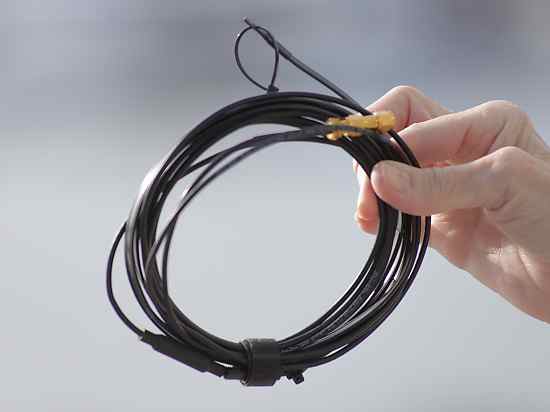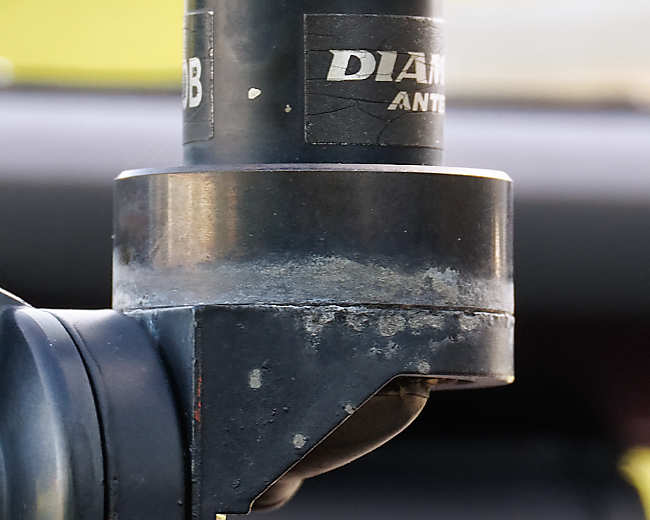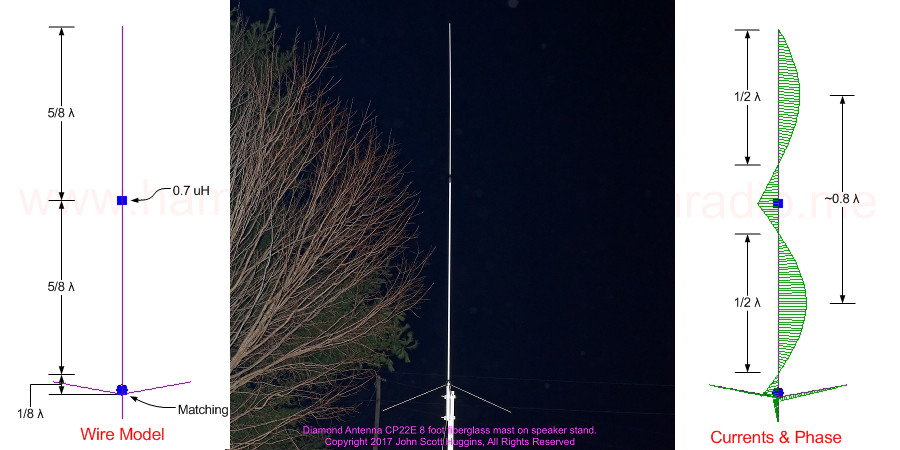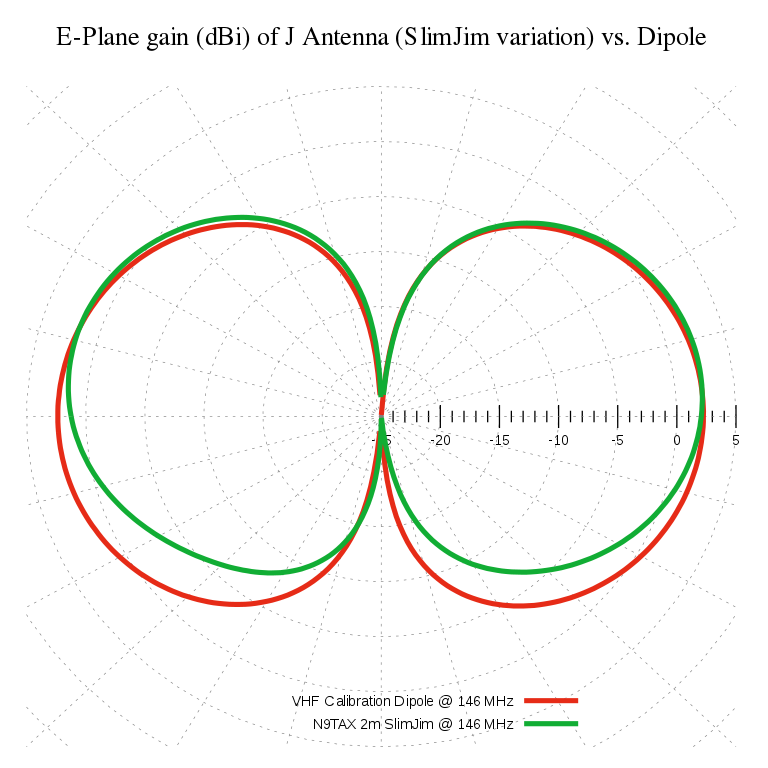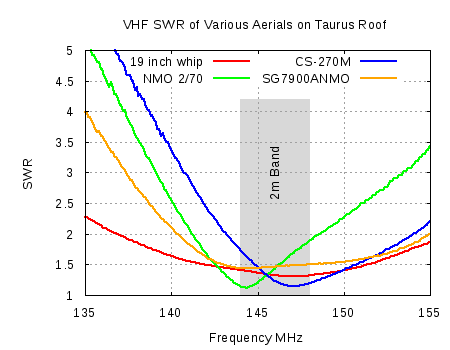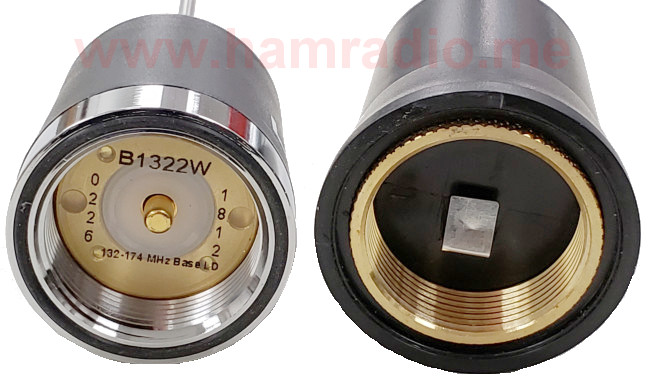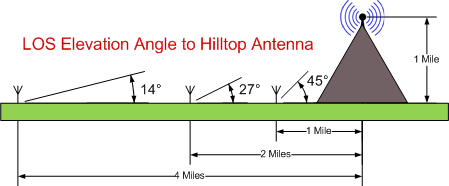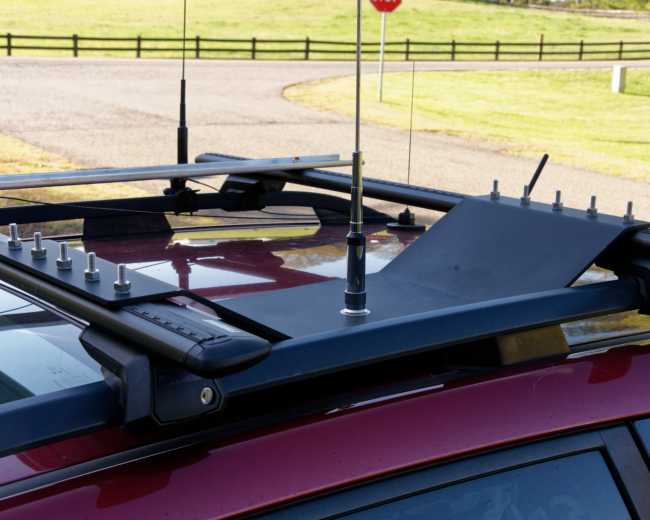Tree snake?
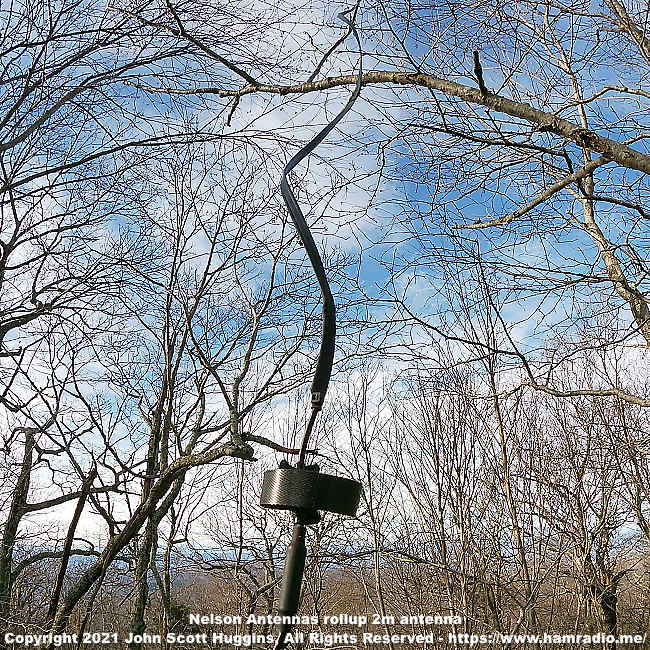
Nope. It’s the rollup 2m aerial from Nelson Antennas. This particular model, purchased in 2018 for some earlier analysis, appears to be the current “Deluxe” model available on Ebay.
Nelson Antennas 2m aerial features
An antenna this simple still has many key features of success.
- Very thin and flexible twin-lead line for the antenna portion (in SlimJIM configuration)
- Dipole gain of 2 to 2.5 dBi.
- Ten feet of thin and flexible feed line… rolls up tight.
- Small SMA female connector (kind of odd it’s not a male connector, but whatever).
- One of the smallest ferrite chokes I’ve seen on a VHF antenna of any kind.
- Nice velcro wraparound strap permanently attached to the antenna – won’t blow away in the wind 🙁
- A small bit of tie wrap at the antenna top for hoisting the antenna. Simple. Perfect for sliding on a branch when on the trails.
The very definition of portable
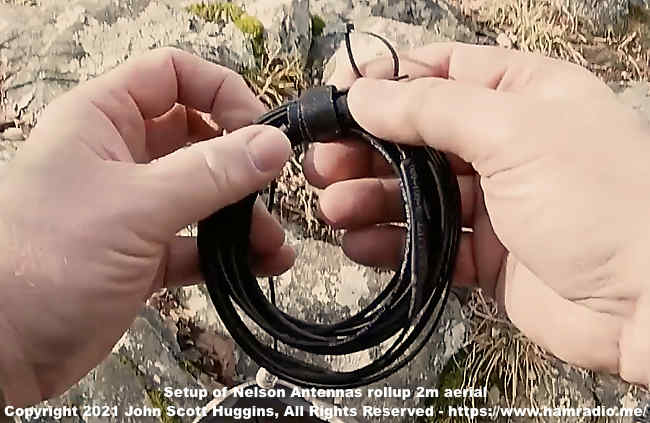
A complete 2m antenna that fits in the palm of your hand. The exceptionally thin twin-lead used in its construction seems unique and specially made just for this purpose. Unlike the more common and bulkier ladder line and RG-58 class coax used by competitors like N9TAX, Nelson Antennas emphasizes portability.
Return Loss at VHF
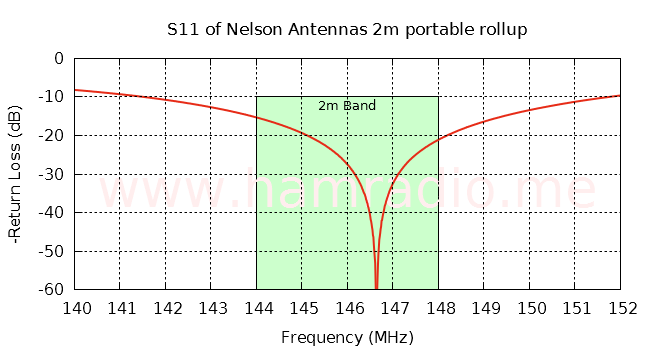
The above plot was performed in laboratory conditions with the antenna tie wrap loop tied to a non-conductive string hanging from a non-conductive structure. The reflection numbers are fantastic. The full coverage of the 2m band isn’t really a surprise, but it’s always nice to confirm.
Bear in mind the 1 dB or so loss of that ten foot RG-174 (or similar) transmission line always makes reflection calculations look slightly better than if measured at the antenna feed point. Regardless, the attention paid to tuning is apparent. Thank you!
Return Loss at UHF
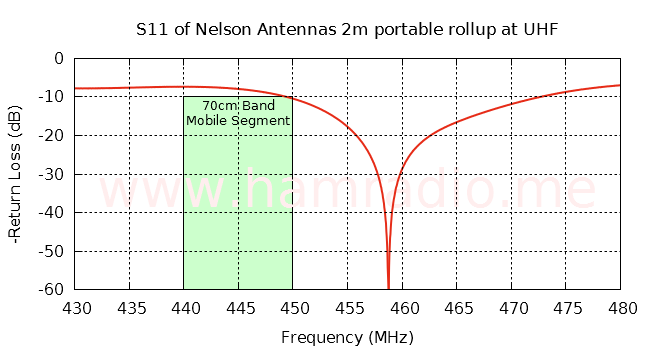
As with most SlimJIM rollup antenna makers, Nelson Antennas states theirs offers usable performance on the 3rd harmonic. Most of the rollup antennas do function in some compromised way, but as you can see above, the Nelson’s UHF tuning point is well above the amateur band.
This doesn’t tell the whole story though. Let’s have a look at real antenna patterns.
UHF antenna pattern of rollups including the Nelson
These following measurements are from a previous article on failed attempts using a VHF design at UHF. This is a bit of a smoking gun for those thinking any of these rollup antennas proportioned for the 2m band work “well” at UHF frequencies.
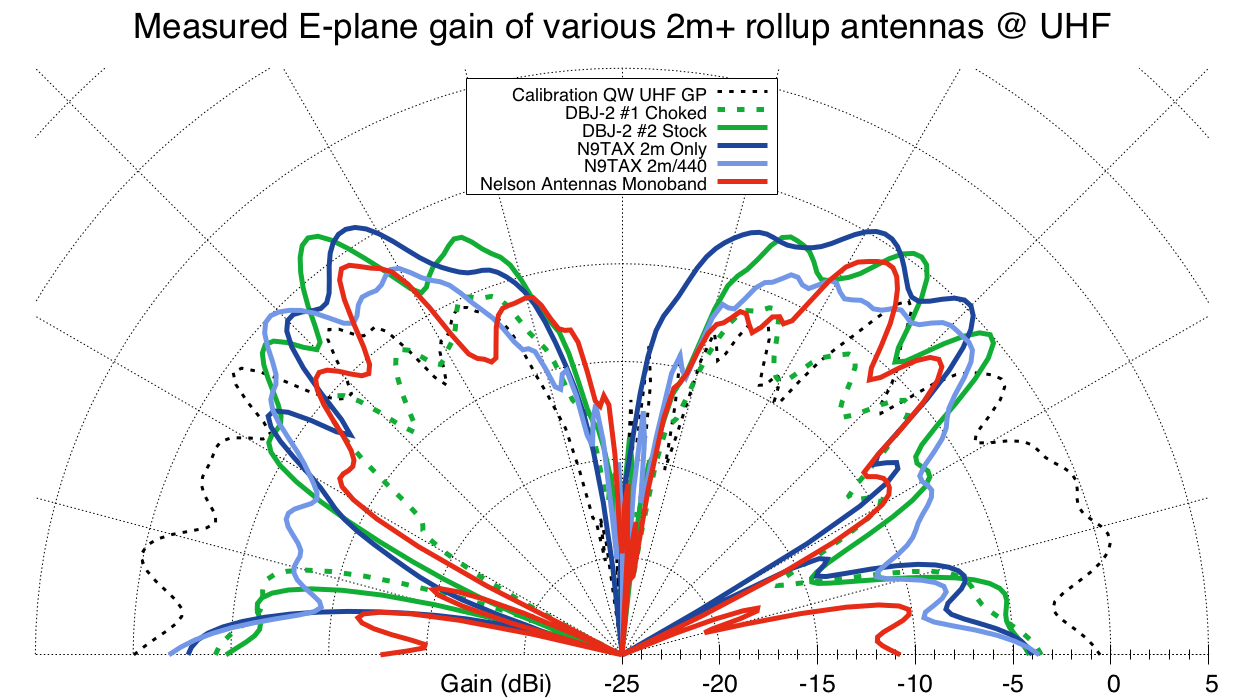
The Nelson Antennas aerial is in the mix in red. Long story short, bring another antenna for UHF if you really need it to perform.
VHF antenna pattern of rollups including the Nelson
Now for some really good news.
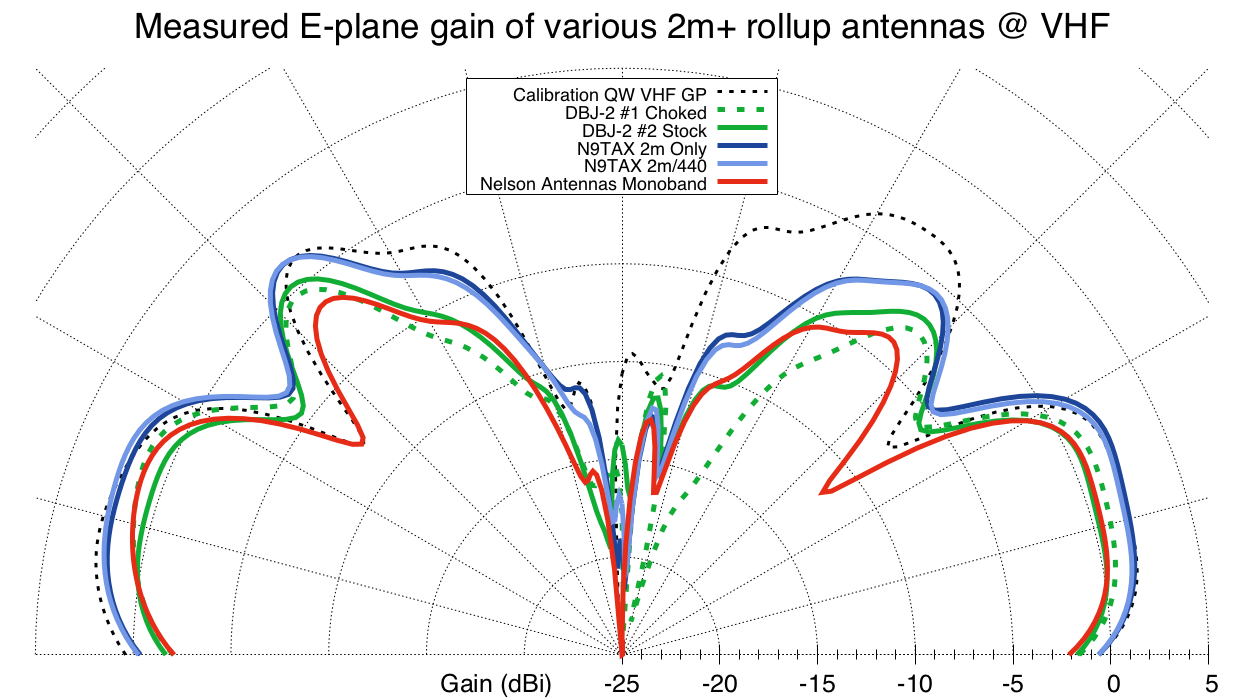
All the antennas in the above comparison work very well. The displayed gain includes whatever loss comes with each antenna’s feed line. The thin materials of the Nelson Antennas’ aerial and lengthy thin feed line add a bit of loss to the overall gain value. The beam shape confirms good radiation from the end-fed dipole element with no perceptible effects from feed line radiation.
For its thrifty size the Nelson Antennas 2m rollup trades a bit of gain while increasing portability. This is a perfectly acceptable trade.
That tiny ferrite choke
Ever seen a ferrite choke this small?
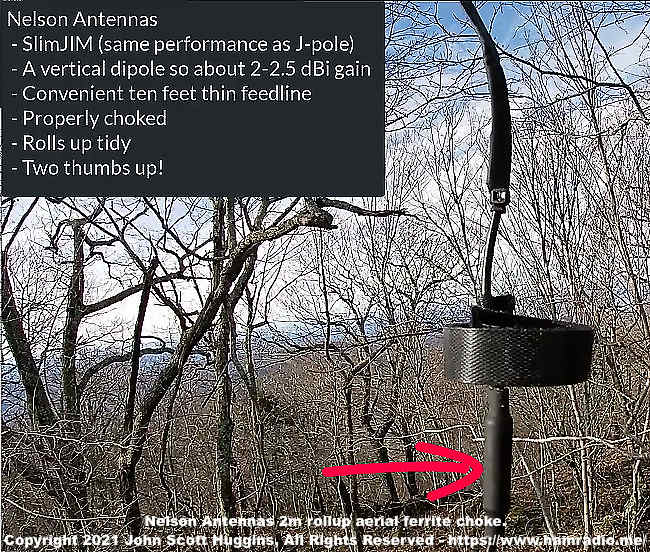
Sure you have, but I bet never for thin coax. I really wondered if a ferrite this small would work well. I did make several measurements of spurious radio current along the coax with and without the ferrite. It does make a noticeable improvement in transmission line currents. So congratulations to Nelson Antennas for doing a good job marrying just enough ferrite to accomplish the important choke task without defaulting to much larger ferrite models.
For this antenna and other rollups like it, the ferrite chokes don’t have much effect at UHF.
Nonsensical antenna specs
The cottage industry that exists to make these rollup antennas are all too often what I call SWR-Only manufacturers. They have some antenna skills, but clearly display a lack of any real antenna understanding beyond the very basics. This is often the case with SlimJIM and J-Pole products I have documented on this site. Let’s review a few points made on the Nelson Antennas Ebay page archived here.
- The 6db of gain you get with this antenna over a typical 5/8 wave antenna more than makes up for the 1db loss in the coax.
Non sequitur. No one cares about a 5/8ths wave antenna in this context. At least Nelson Antennas recognizes the comparison originally made by Fred Judd and doesn’t make the egregious mistake made by most others with slapstick charts. Let’s be clear. This antenna’s gain is about 2 dBi less a bit due to coax losses. I guess Nelson felt the need to keep that 6 dB number in his specifications to keep up with the Joneses, so to speak, but if Jones is misinformed, why bother. This is an advertising gimmick at best.
Next.
- A Slim Jim antenna is basically similar to a Jpole design, but it exhibits a lower radiation angle in the range of 8-10 degrees on the horizon, compared to 1/2 wave Jpole which exhibits a 20-30 degree angle on the horizon. (ie. more gain)
False, utterly. Let’s view representative chamber measurements of another SlimJIM and a J-pole antenna.
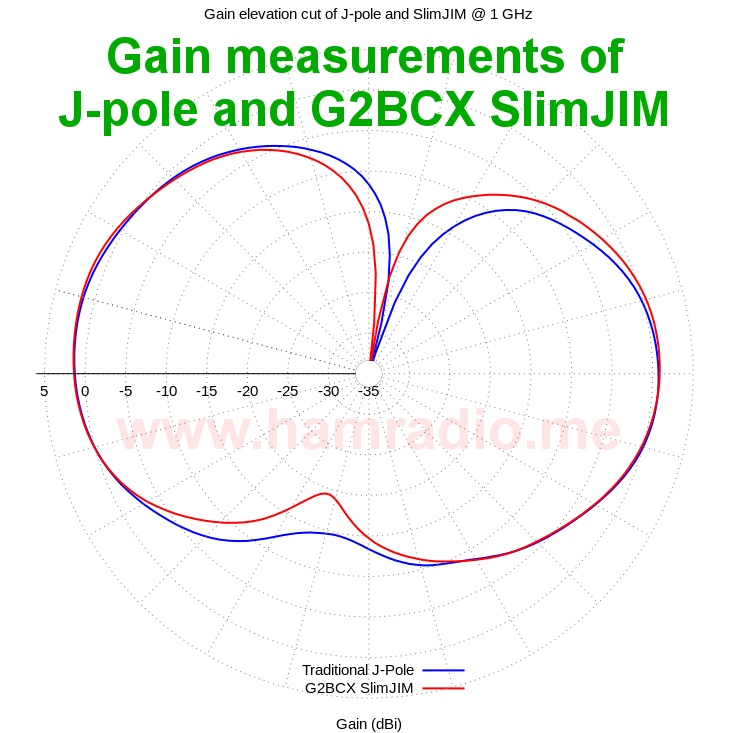
Nearly identical performance. Lower radiation angle compared to J? Sorry my man… false.
So… look… I realize I’m a bit harsh on the maker of this perfectly fine antenna product, but I get so tired of the SlimJIM mythos continuing to permeate the amateur radio discussions reinforced by the “popular press.” I’ll always hold sellers of antennas accountable to higher standards.
What this really means
The Nelson Antennas rollup 2m aerial puts an end-fed dipole up high where you need it. It may only have 1-2 dBi overall gain when including the feed line loss, but having that exactly where you need it wins big on performance every day.
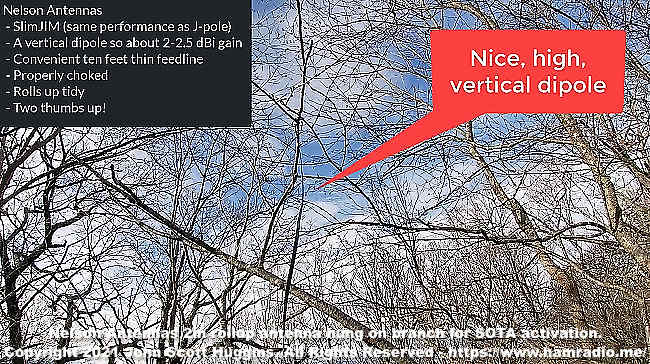
Let’s hear live critique of 100 mW into this antenna during a SOTA activation.
Conclusion
Silly specifications aside, the Nelson Antennas 2m rollup product works exceptionally well at its primary 2m band. I would use something else for 440 since it clearly isn’t optimal for anything other than 2m. This product is also available dimensioned for the 220 band. The thin parallel line used in the construction probably would work fine for a dedicated 440 model as well. If available, I would probably purchase one just for 440.
It’s a good value at a price about thirty dollars (US). I’m sure someone out there thinks “Thirty dollars!!! Why not make your own for $5.” Given the sleek and apparently custom materials, good luck with that.
As far as the product itself goes, this is a no-brainer purchase for anyone in need of 2m on the go. This rollup with a small HT makes for a commo system you probably won’t notice in your pack while hiking. Not many radio solutions are this out of the way when stowed.
